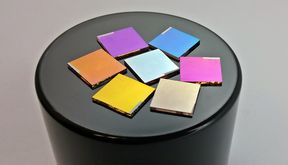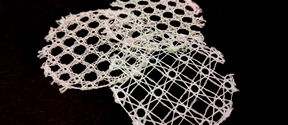Plasmonic biosensors enable development of new easy-to-use health tests

The plasmonic biosensor can detect diseased exosomes even by the naked eye. Exosomes, important indicators of health conditions, are cell-derived vesicles that are present in blood and urine.
A rapid analysis by biosensors helps recognize inflammatory bowel diseases, cancer and other diseases rapidly and start relevant treatments in time. In addition to using discovery in biomedicine, industry may use advanced applications in energy.
Researchers created a new biosensor by depositing plasmonic metaparticles on a black, physical body that absorbs all incident electromagnetic radiation. A plasmon is a quantum of plasma oscillation. Plasmonic materials have been used for making objects invisible in scientific tests. They efficiently reflect and absorb light. Plasmonic materials are based on the effective polarizabilities of metallic nanostructures.
“It is extraordinary that we can detect diseased exosomes by the naked eye. The conventional plasmonic biosensors are able to detect analytes solely at a molecular level. So far, the naked-eye detection of biosamples has been either rarely considered or unsuccessful”, says Professor Mady Elbahri from Aalto University.
Plasmonic dipoles are famous for their strong scattering and absorption. Dr. Shahin Homaeigohar and Moheb Abdealziz from Aalto University explain that the research group has succeeded in demonstrating the as-yet unknown specular reflection and the Brewster effect of ultrafine plasmonic dipoles on a black body host.
“We exploited it as the basis of new design rules to differentiate diseased human serum exosomes from healthy ones in a simple manner with no need to any specialized equipment”, says Dr. Abdou Elsharawy from the University of Kiel.
The novel approach enables a simple and cost-effective design of a perfect colored absorber and creation of vivid interference plasmonic colors.
According to Elbahri, there is no need to use of sophisticated fabrication and patterning methods. It enables naked-eye environmental and bulk biodetection of samples with a very minor change of molecular polarizability of even 0.001%.
The study was published today in Advanced Materials.
For more information:
Professor Mady Elbahri, Aalto University
mady.elbahri@aalto.fi
Tel. +358 50 464 8990
Article: Mady Elbahri, Moheb Abdelaziz, Shahin Homaeigohar, Abdou ElSharawy, Mehdi Keshavarz Hedayati, Christian Röder, Mamdouh El Haj Assad, and Ramzy Abdelaziz: Plasmonic Metaparticles on a Blackbody Create Vivid Reflective Colors for Naked-eye Environmental- and Clinical Bio-detection. Advanced Materials 2017. DOI: 10.1002/adma.201704442
Read more news
Tonmoy Saha Presents Textile Recycling Research at CIMANET Seminar
The CIMANET Research Seminar, held under the theme “Future Leaders in Circular Materials Bioeconomy,” took place on Thursday, December 4, at the Scandic Marina Congress Center in Helsinki.
Textile Chemistry Group Meeting Held
The Annual Meeting of The Textile Chemistry Group held on Thursday, December 11, uniting researchers, doctoral candidates, master’s students, and interns to present their advances in sustainable textile technologies.
Learning Centre opening hours during Christmas and year-end holidays
Thank you for the past year and have a wonderful holiday season!






